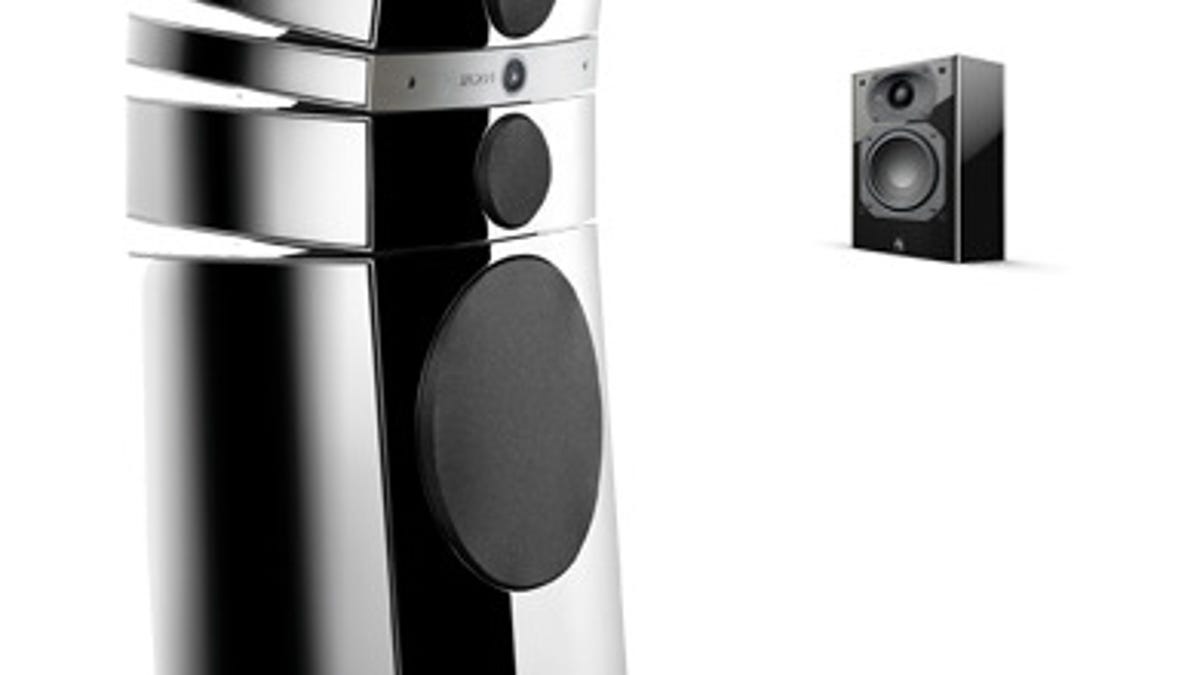Who needs big speakers?
Are big speakers always better than little ones? If you have a large room, love bass, and like to listen loud, you need big speakers.

When it comes to speakers, size does matter. Big speakers clobber little ones in two ways: they can play louder and make more bass. But since the market demands increasingly smaller speakers the question comes up: can small speakers ever sound better than big ones? Well, the answer is sometimes and in some ways, but great-sounding small speakers are never cheap.
The best-sounding small speakers I've heard in quite some time came from a pair of Anthony Gallo Acoustics Reference Strada speakers ($995 each). The speaker is comprised of two small, stainless steel spheres, each with a 4-inch woofer; the spheres straddle a cylindrical tweeter that produces exceptionally broad dispersion. The Strada doesn't make much bass, so I heard it with the matching Gallo TR-3 cylindrical subwoofer. The system was sweet, detailed, dynamically alive, and very, very natural sounding. But it costs over three grand and doesn't have the muscle of a hefty floorstanding speaker for the same or fewer dollars.
So if you plan on never, ever listening to loud music or having a party, and room-shaking bass isn't a priority, wee speakers might be the way to go. How tiny is tiny? Obviously, size is relative, but I'd rate any speaker that is either less than 7 inches high, or has a smaller than 4-inch woofer as a tiny speaker. If your room is large--say anything bigger than 15 by 20 feet (300 square feet)--don't even think of buying small speakers.
That said, Energy and Mirage make terrific-sounding, yet affordable, minispeakers, but like most small speakers they have to be used with a subwoofer to supply the bass the speakers don't make on their own--which means some of the space-saving advantage of the speakers' size is forfeited with the sub. The sub also adds to the complexity of setup, and increases the chances of winding up with less than optimal sound quality. Still, with a matching sub, properly placed in the room, the results can be quite good.
Keep in mind that the smaller the speaker, the more dependent it will be on the sub. And with very small speakers, sub placement options are more restricted; ideally the sub should be placed as close as possible to the front left or right speakers. Increasing distance beyond 4 feet will likely result in poor speaker-subwoofer blend, so you'll be aware that all the bass is coming from a separate location than the speakers.
As much as I admire the sound of the best small speakers, I still prefer larger ones. They're more relaxed, and since they're not relying on a sub to produce the bass, the quality of the bass, at soft or loud volume, is better. Those advantages are more relevant for music listening than home theater, but even for home theater, big speakers' poise while dishing out heavy-duty special effects and explosions isn't a subtle distinction. Big center speakers always crush the smaller competition.
Interested? Start by checking Aperion Audio and Klipsch's floorstanders; prices start around $500 per pair.

